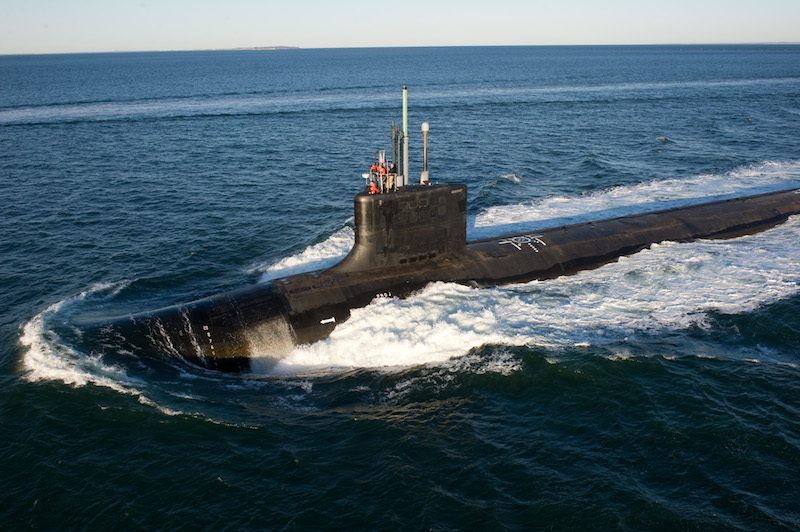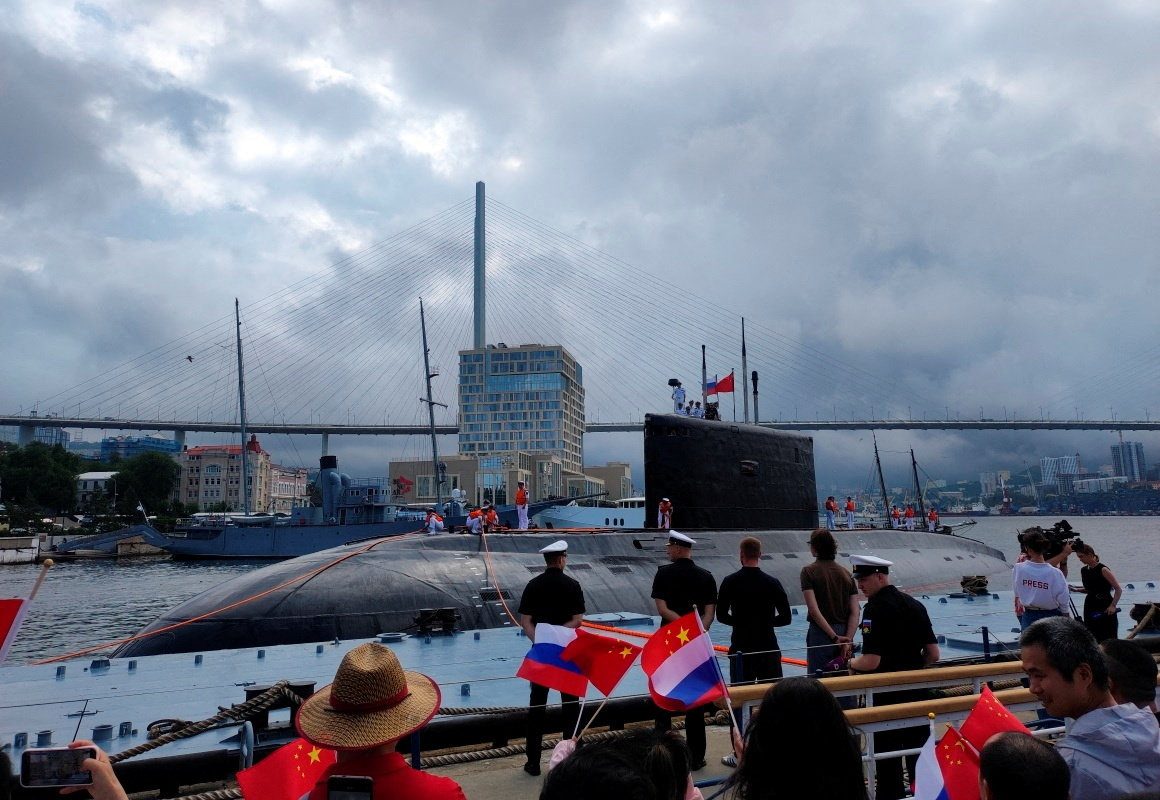By Tony Capaccio (Bloomberg) The U.S. Navy has swapped more than 1,600 parts among its new Virginia-class submarines since 2013 to ease maintenance bottlenecks as components that are supposed to last 33 years wear out decades sooner.
Parts are being shuttled regularly among the nuclear-powered fast-attack submarines so that vessels in the $166 billion class built by General Dynamics and Huntington Ingalls Industries can return to operations, according to data from the Naval Sea Systems Command and the Congressional Budget Office.
The 48-ship Virginia class is the pillar of the Navy’s undersea strategy into the second half of the 21st century to counter China’s growing surface fleet, with increasing firepower in each succeeding model, or “block.” The subs can stalk underseas adversaries with torpedoes, strike surface vessels or attack land targets with Tomahawk cruise missiles while staying on patrol for months.
Editorial: Admiral, I Am NOT Ready For War by Captain John Konrad
The parts problem is a readiness issue “that goes with the overall concern that the Navy is not investing enough in maintenance, supply chains, and shipyard infrastructure,” said Bryan Clark, a former special assistant to the chief of naval operations. Clark, who’s now a naval analyst with the Hudson Institute, said “the Navy may have been too slow to act on indications that some components were wearing out faster.”
Congress has continually pushed the Navy to increase construction rates for the Virginia class from two vessels a year to three.
If a part isn’t available for a sub that’s finishing refurbishment, shipyard maintenance workers may be forced to borrow, or “cannibalize,” one from a submarine entering maintenance in order to reduce delays. Most cannibalized parts are for non-propulsion electronic systems, but the Navy declined to specify which ones are affected, citing operational security.
The number of swapped parts for the submarines, which began entering service in 2004, increased from 100 in 2013 to 171 in 2016, 201 in 2018 and 452 in 2019 before declining to 318 last year. The Navy projects the number will drop to 82 between this year and next.
The big disadvantage of cannibalizing parts from one submarine to another is the extra workload involved, according to the Congressional Budget Office, as well as the risk that a part might be damaged during the extra steps. The Navy doesn’t know how much the swaps add to workload, saying that at this point “there is limited range and depth of data.”
The parts-swapping problem is in addition to delays in delivery of the submarine’s newest model, the Government Accountability Office said in an assessment this month. The potential 12-vessel “Block V” version of the submarine “is already costing more than expected,” the GAO said.
It’s Time For Kings Point To Step Up To The Plate by Captain John Konrad
The Defense Department’s fiscal 2022 request would fund the 35th and 36th vessels. The latest models will have an enlarged capacity for 65 torpedo-sized weapons, up from 37 today. By fiscal 2028, the Navy wants to deploy hypersonic weapons on the Virginia class.
Although some components expected to last for the life of a sub “have failed sooner than expected, the Virginia Class submarine design changes were revolutionary and forward-thinking” and the acquisition strategy offers “the ability to make reliability improvements in later blocks,” the Naval Sea Systems Command said in a statement.
Some parts identified to last 33 years based on engineering analysis and testing,“were subject to degradation” such as “corrosion caused by complex galvanic interactions,” or when two dissimilar metals or electrical parts come in contact for an extended period of time, “that had not been predicted in some operating environments,” the Navy said.
‘Not Satisfied’
The Navy’s submarine leaders are “not satisfied with any material cannibalization that limits our submarine fleet’s ability to respond to national tasking and is taking all steps necessary to avoid these scenarios,” the command said. It said it is ordering parts earlier to “reduce material work stoppages and maintenance delays awaiting components.”
According to the Navy, 70% of the part swaps were between Block I subs that first entered service in 2004 and Block II vessels initially delivered in 2008.
Flaws in contractor quality and parts that were out of specification “contribute to a small percentage” of premature parts wear, the Navy said.
Liz Power, a spokesperson for Falls Church, Virginia-based General Dynamics, said in an email, “We work closely with the Navy to help it address any unanticipated issues with parts, to include initiatives to design improvements that can be applied to future boats.”
Brent Sadler, a 26-year Navy veteran with extensive tours on nuclear-powered submarines, said his “assessment is that operational assumptions were off in the design.” He said “suppliers may have made modifications to the materials after design without considering” potential corrosion that “resulted in rapid failure of specific parts.”
It’s “not clear what steps Navy has taken to address the root cause of this situation, which to me is the most important aspect of this,” said Sadler, who’s now a naval fellow at the Heritage Foundation.
Related Book: Turn the Ship Around!: A True Story of Turning Followers into Leaders by L. David Marquet
By Tony Capaccio © 2021 Bloomberg L.P.

 Join The Club
Join The Club











